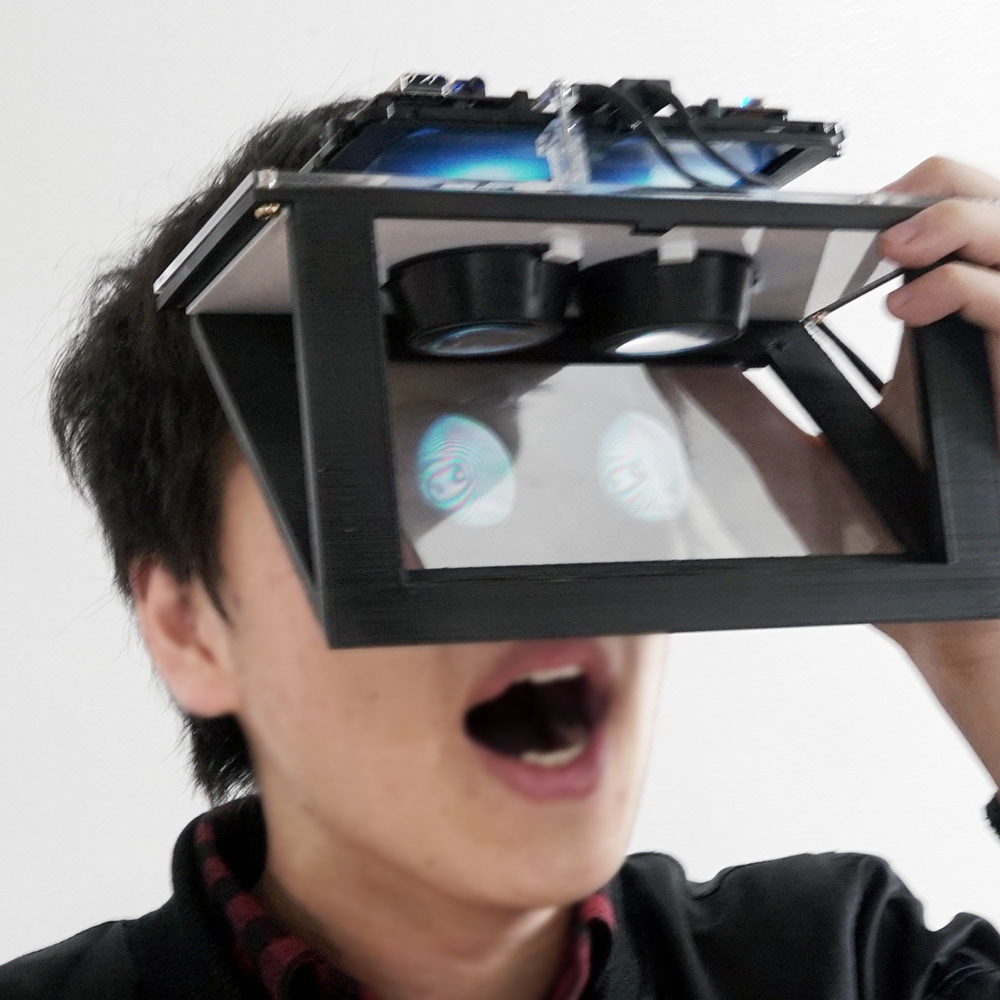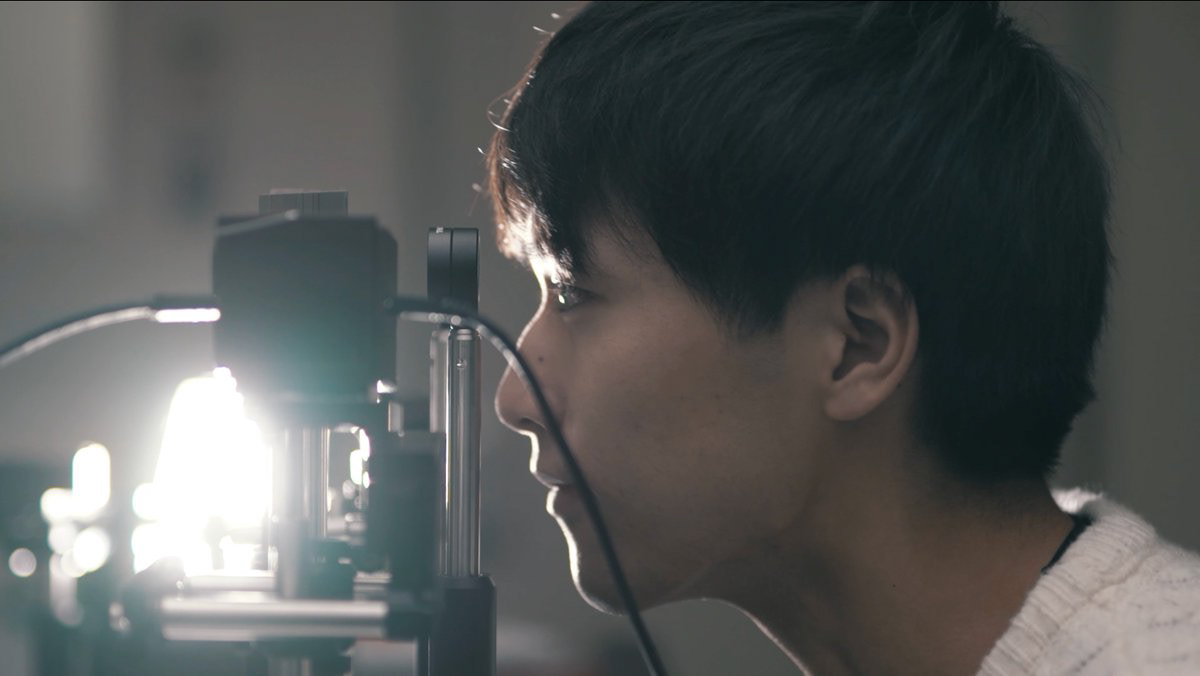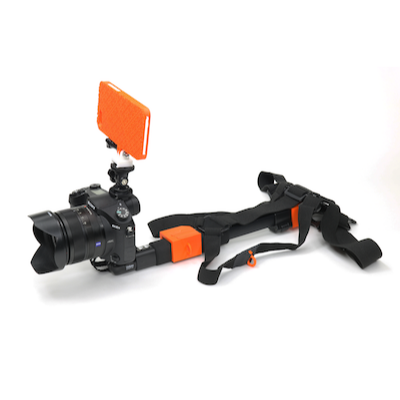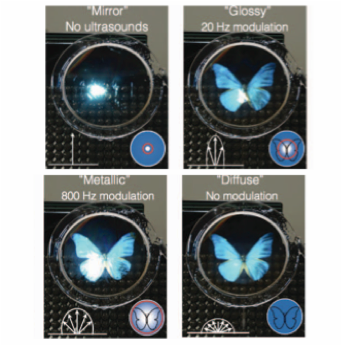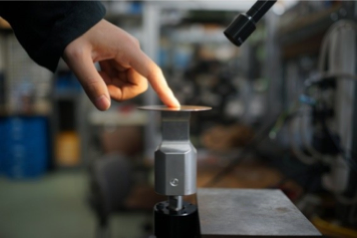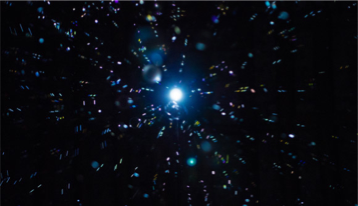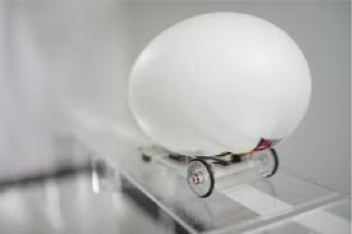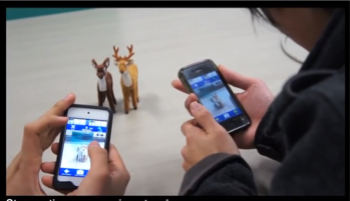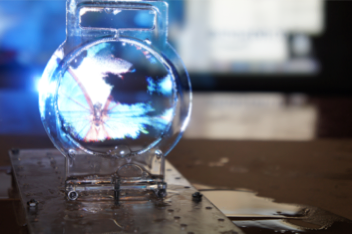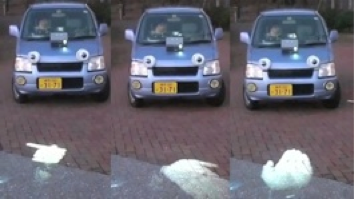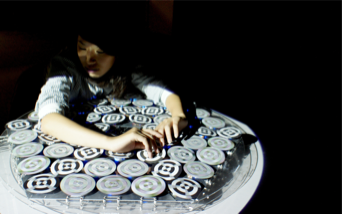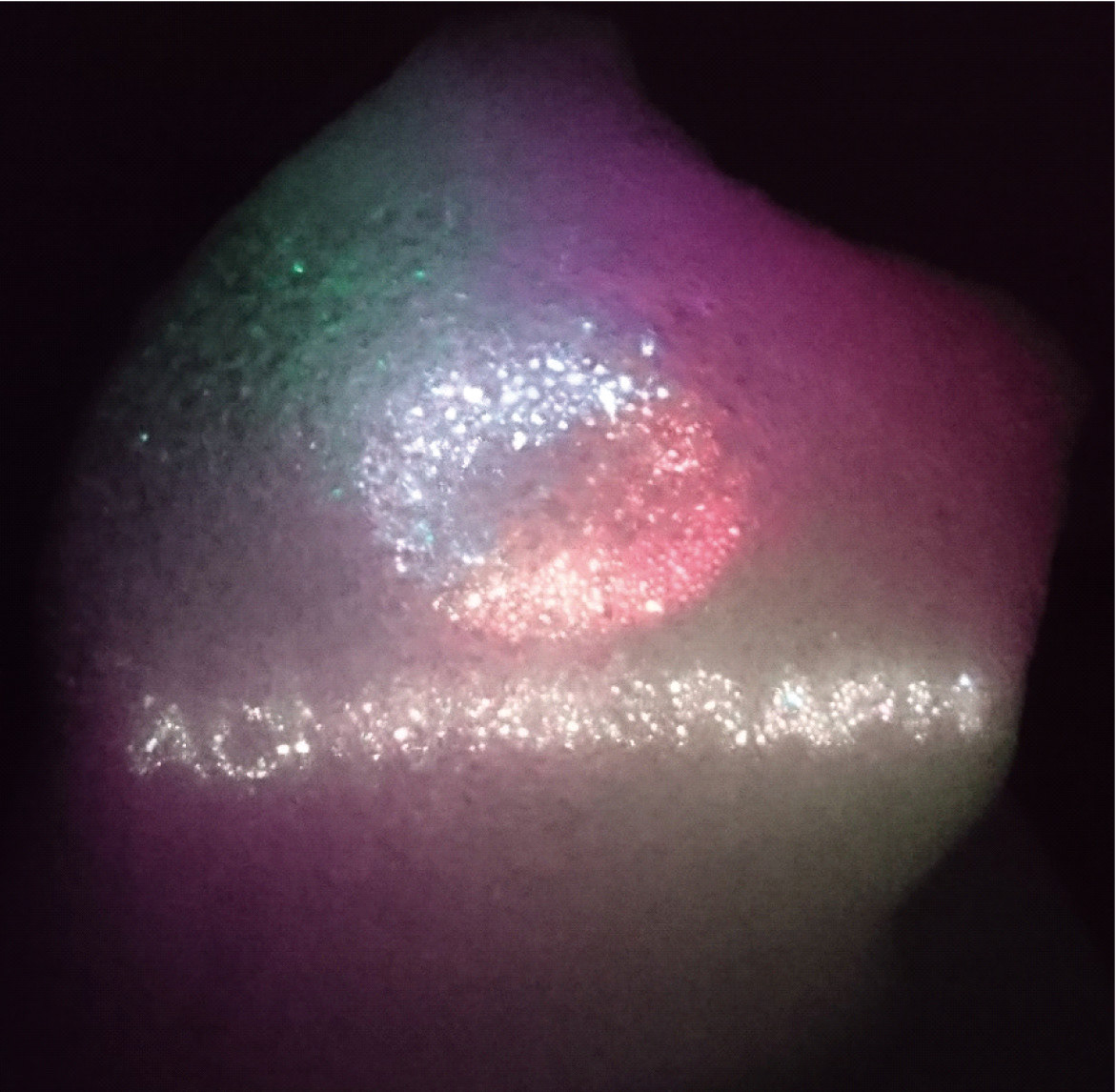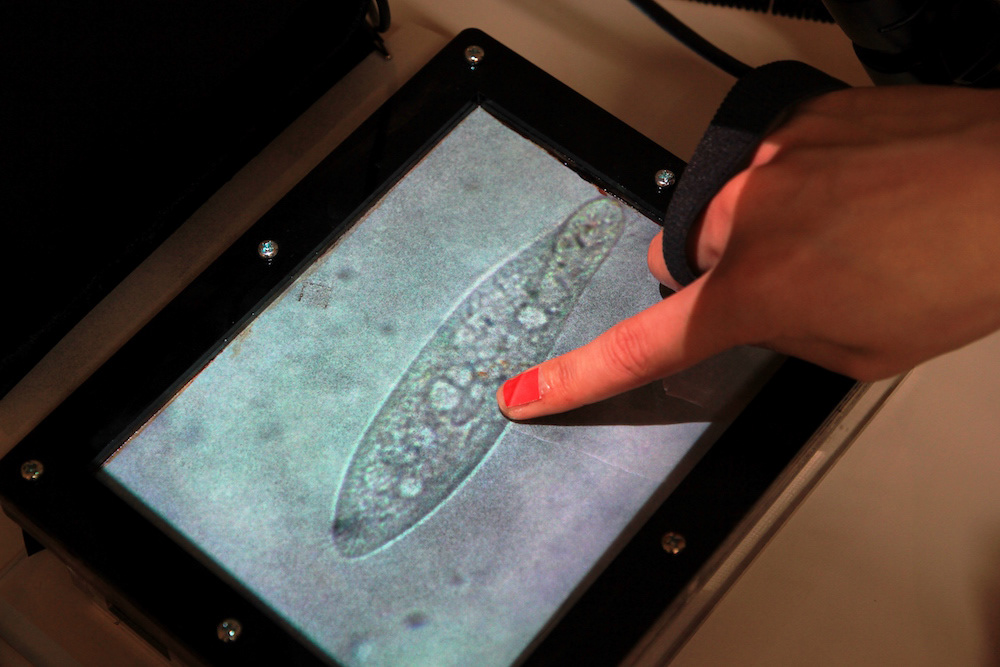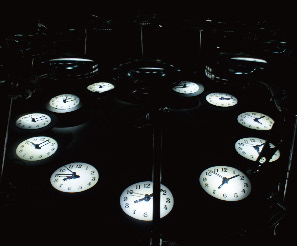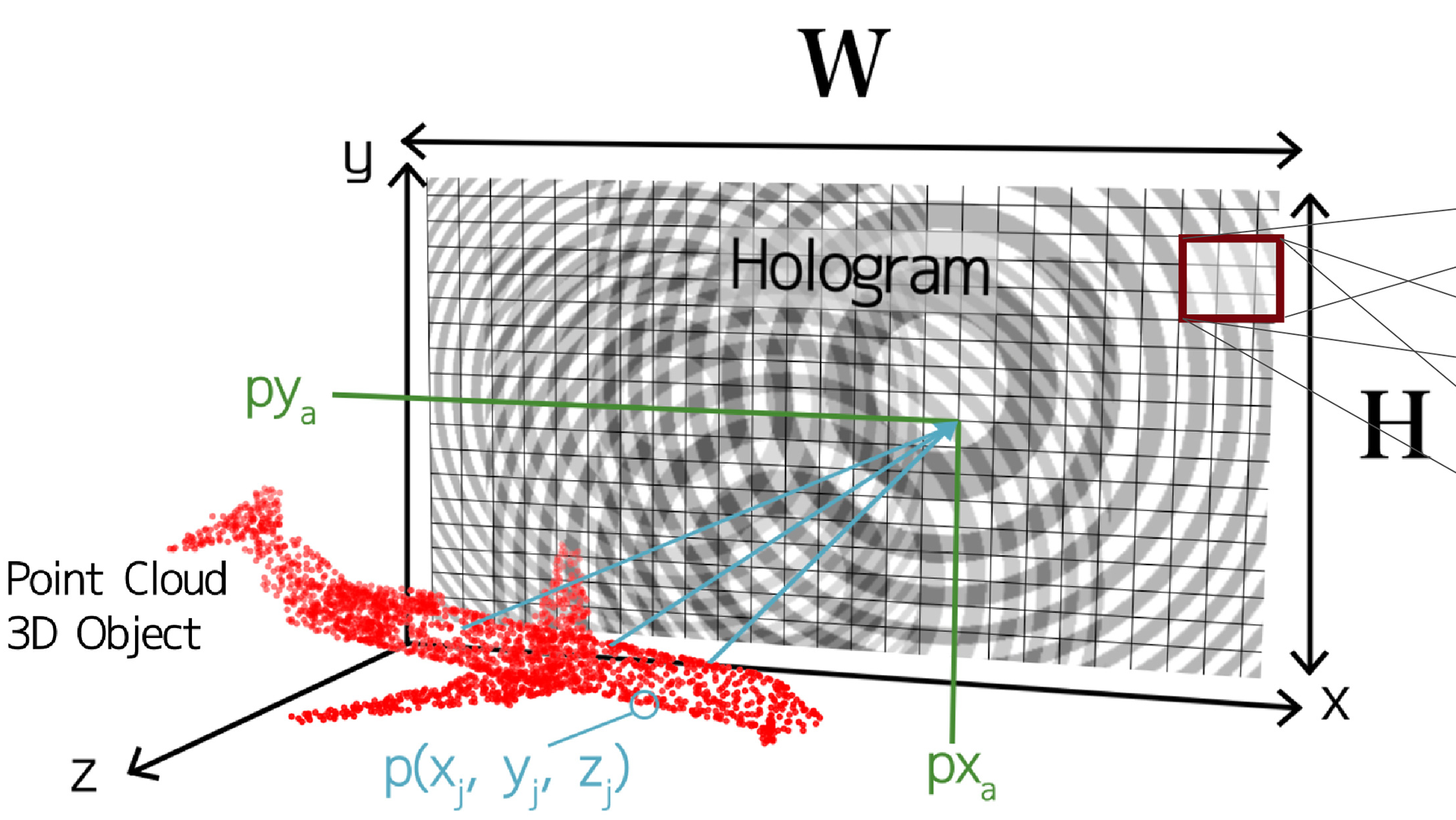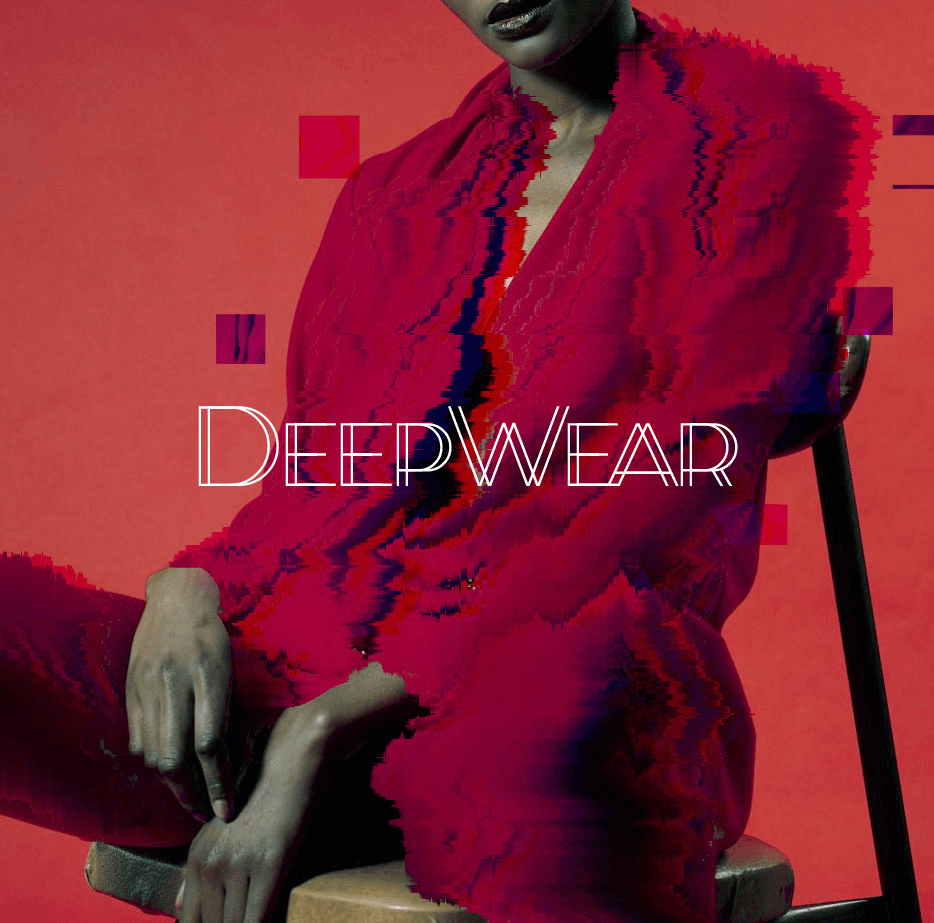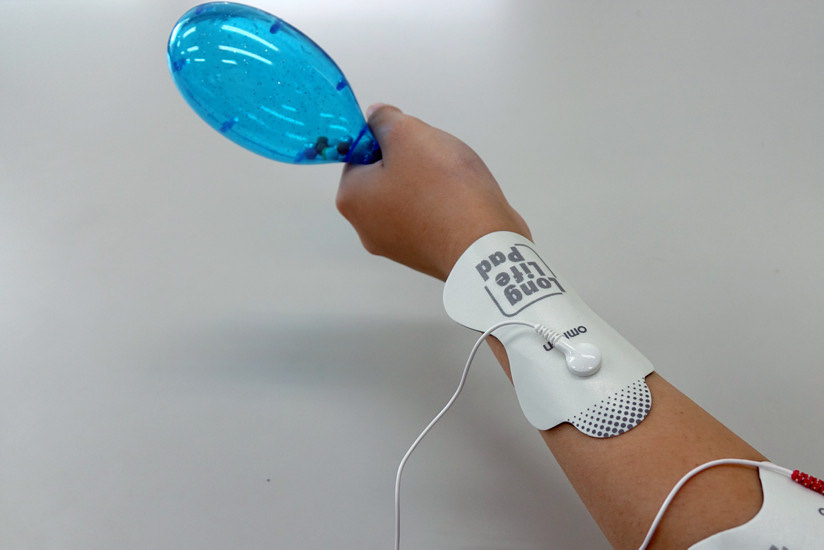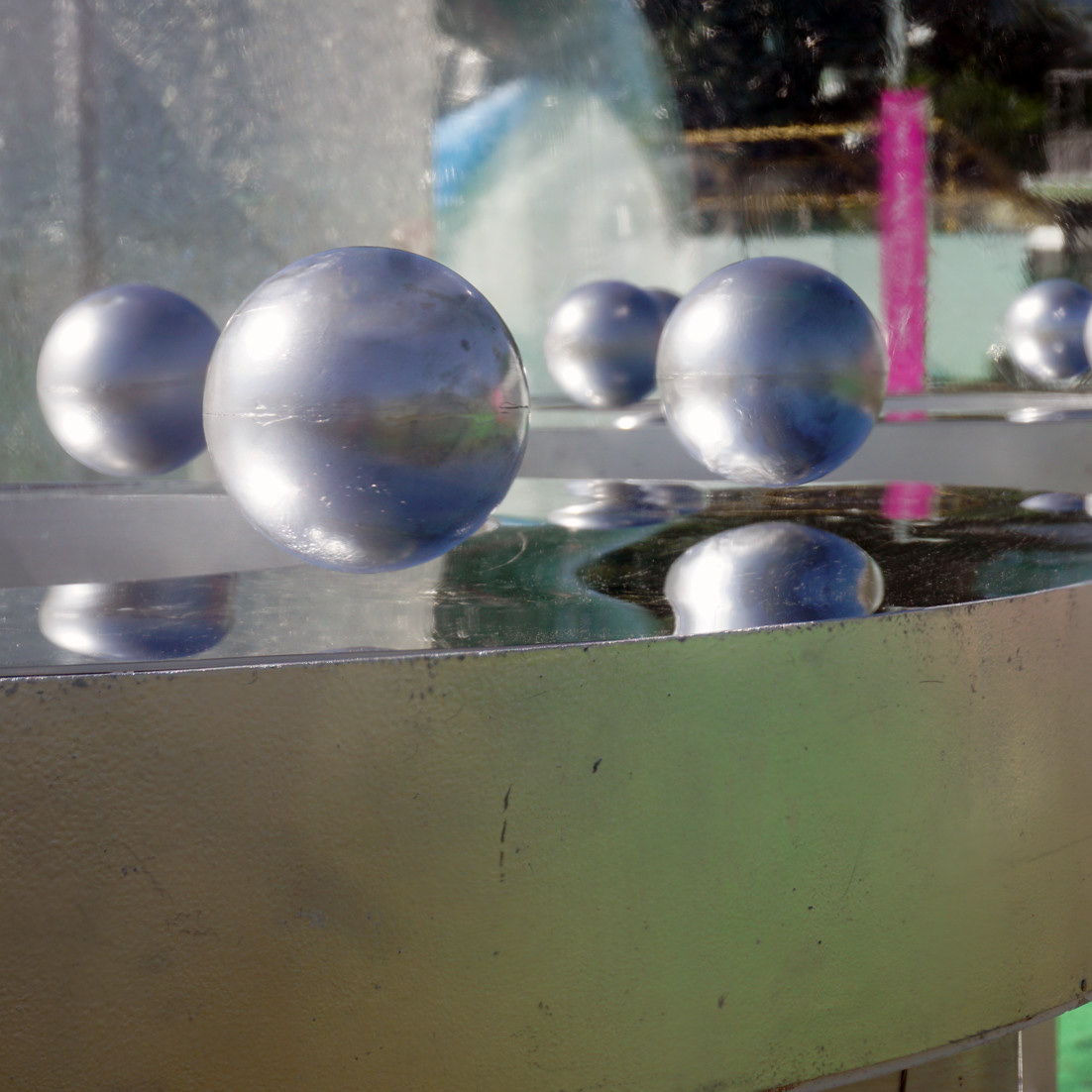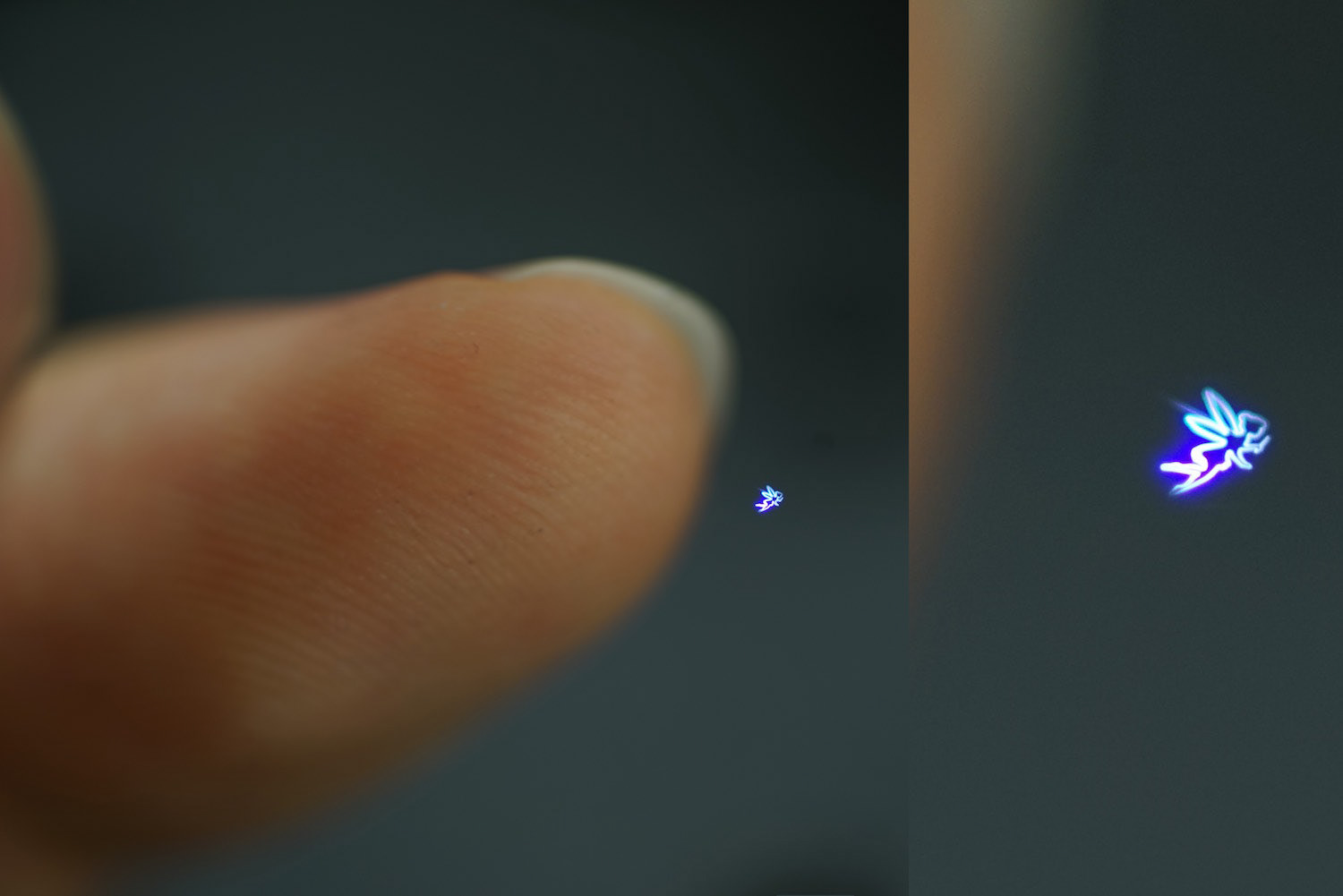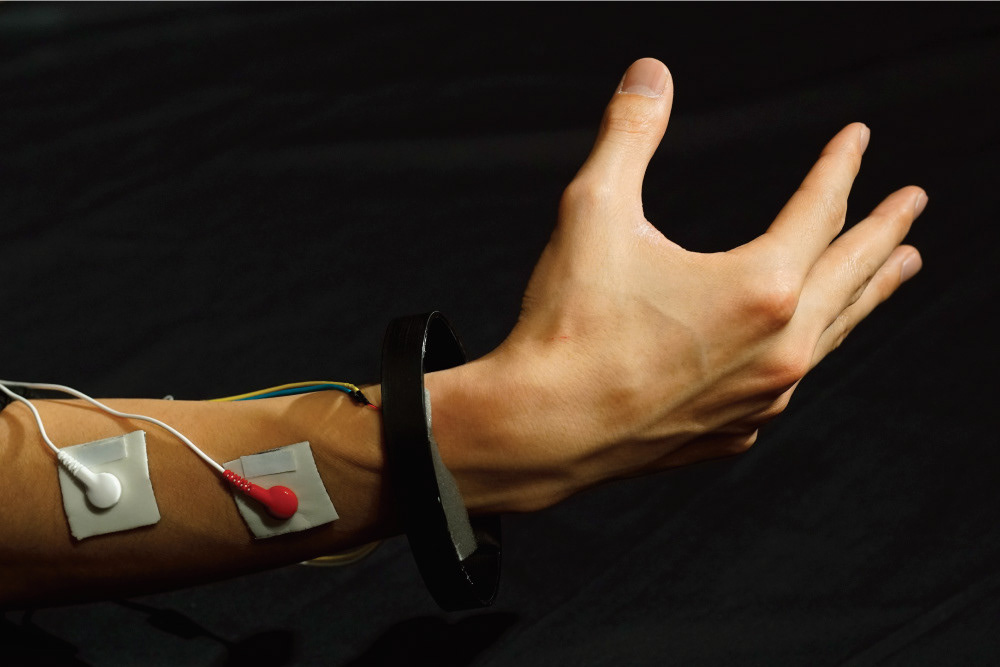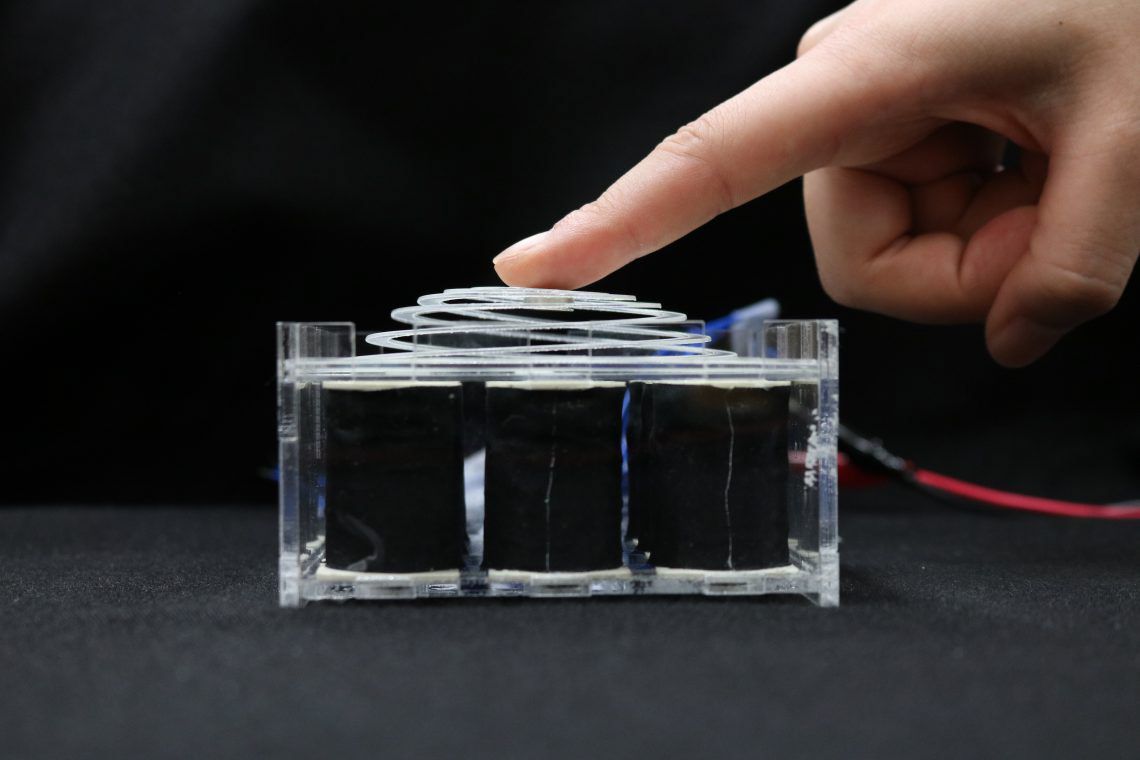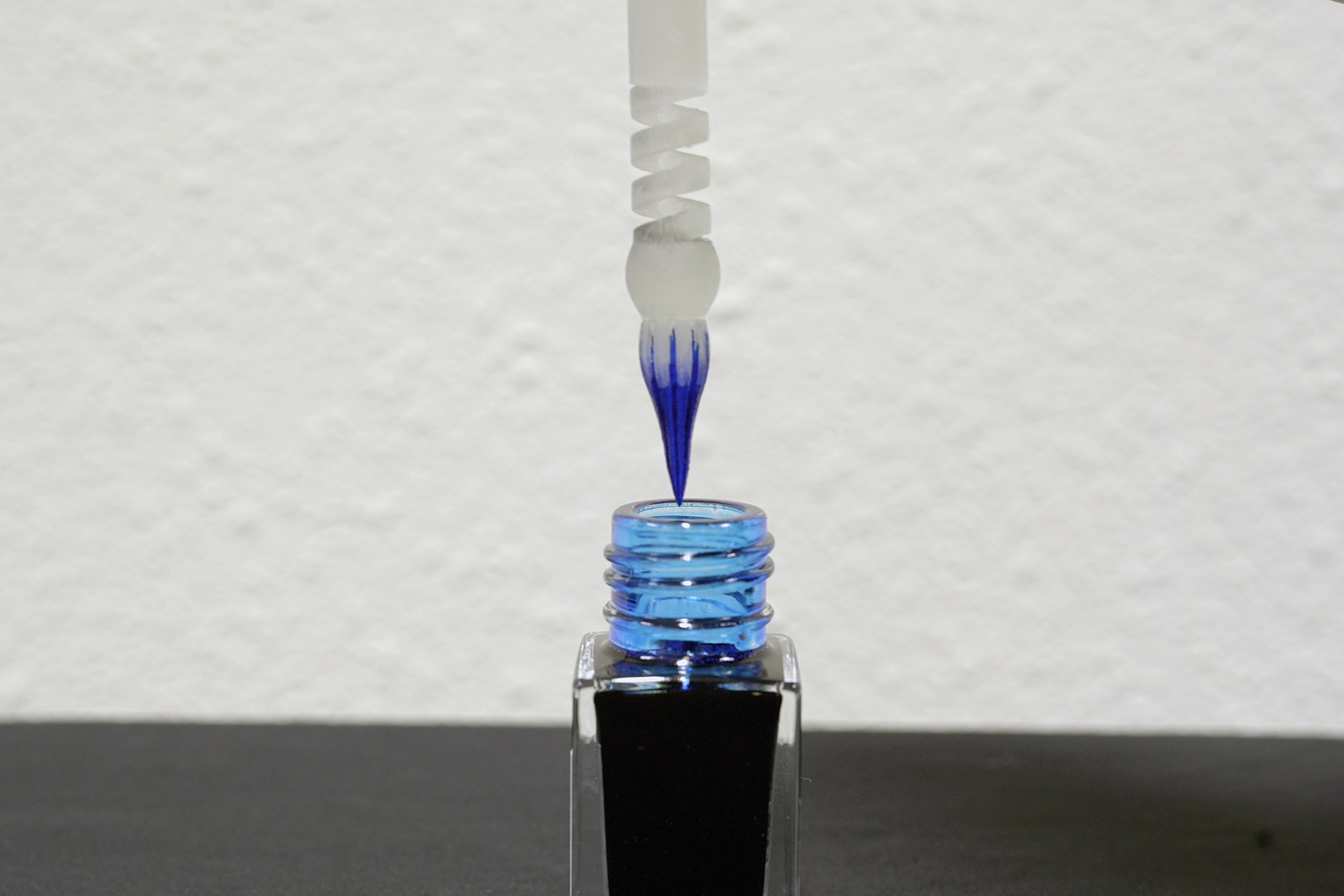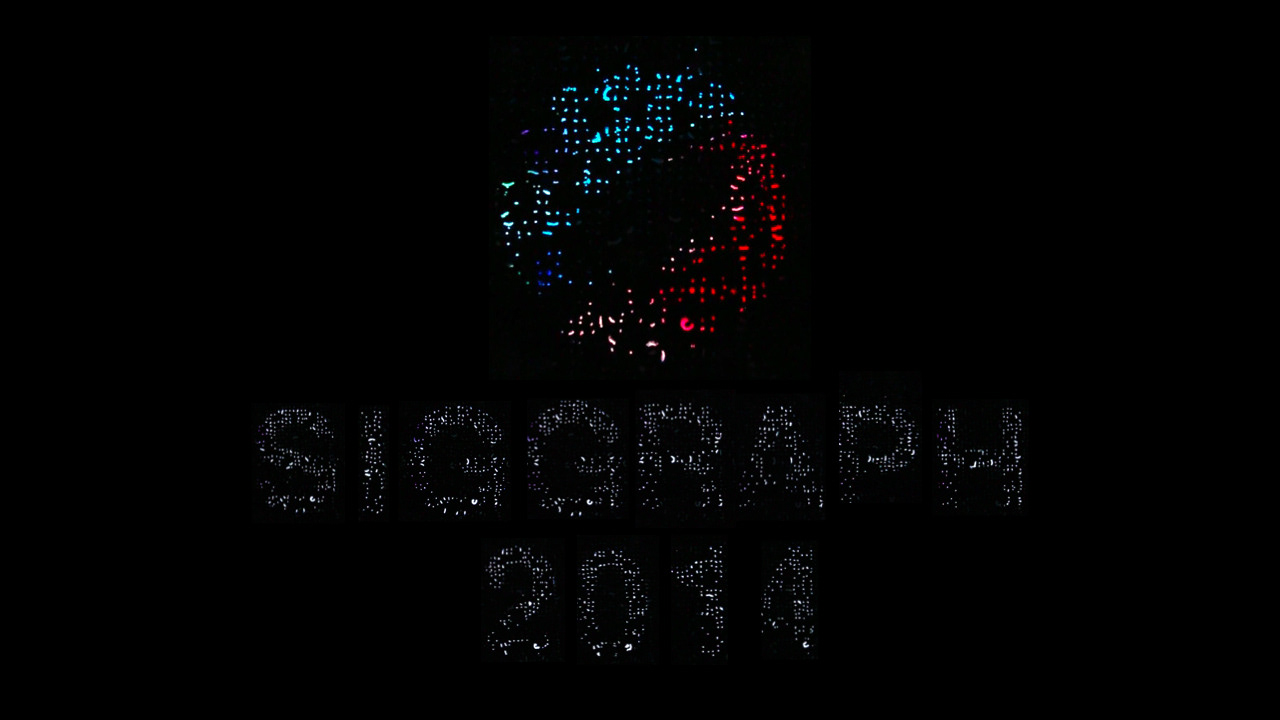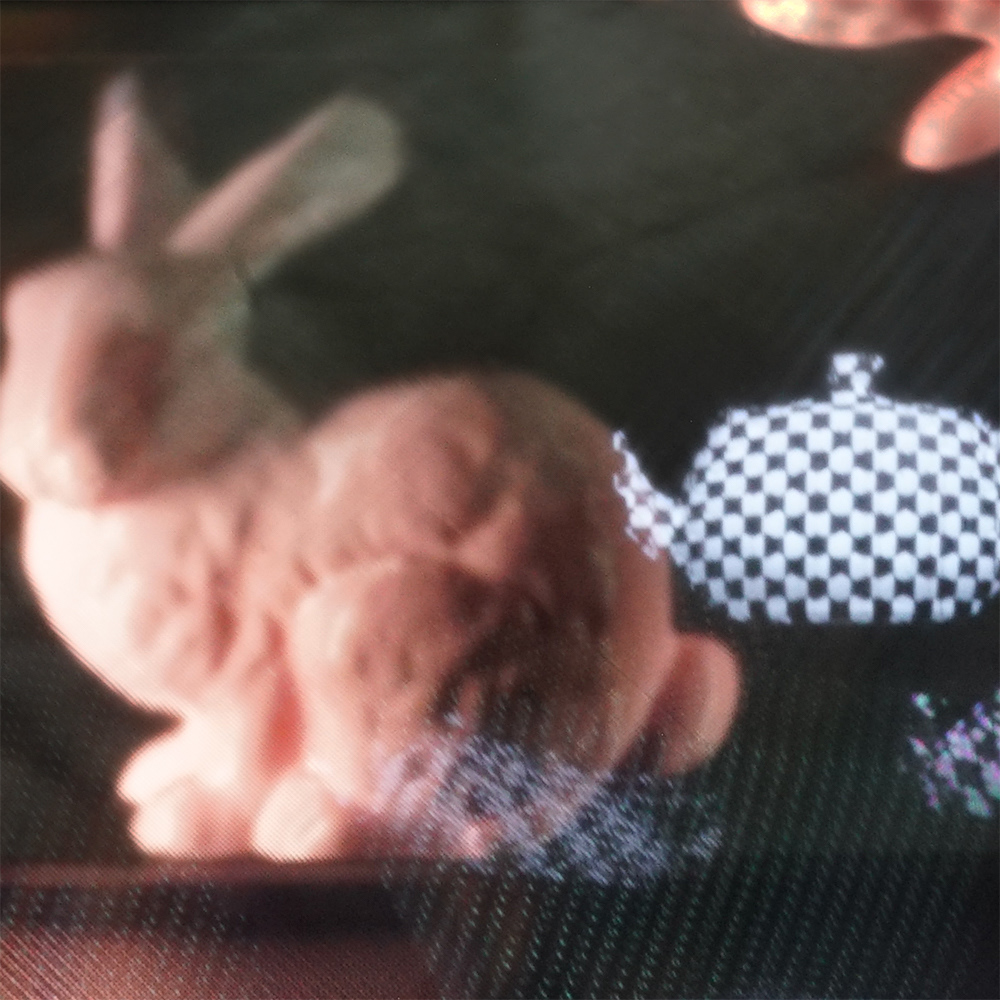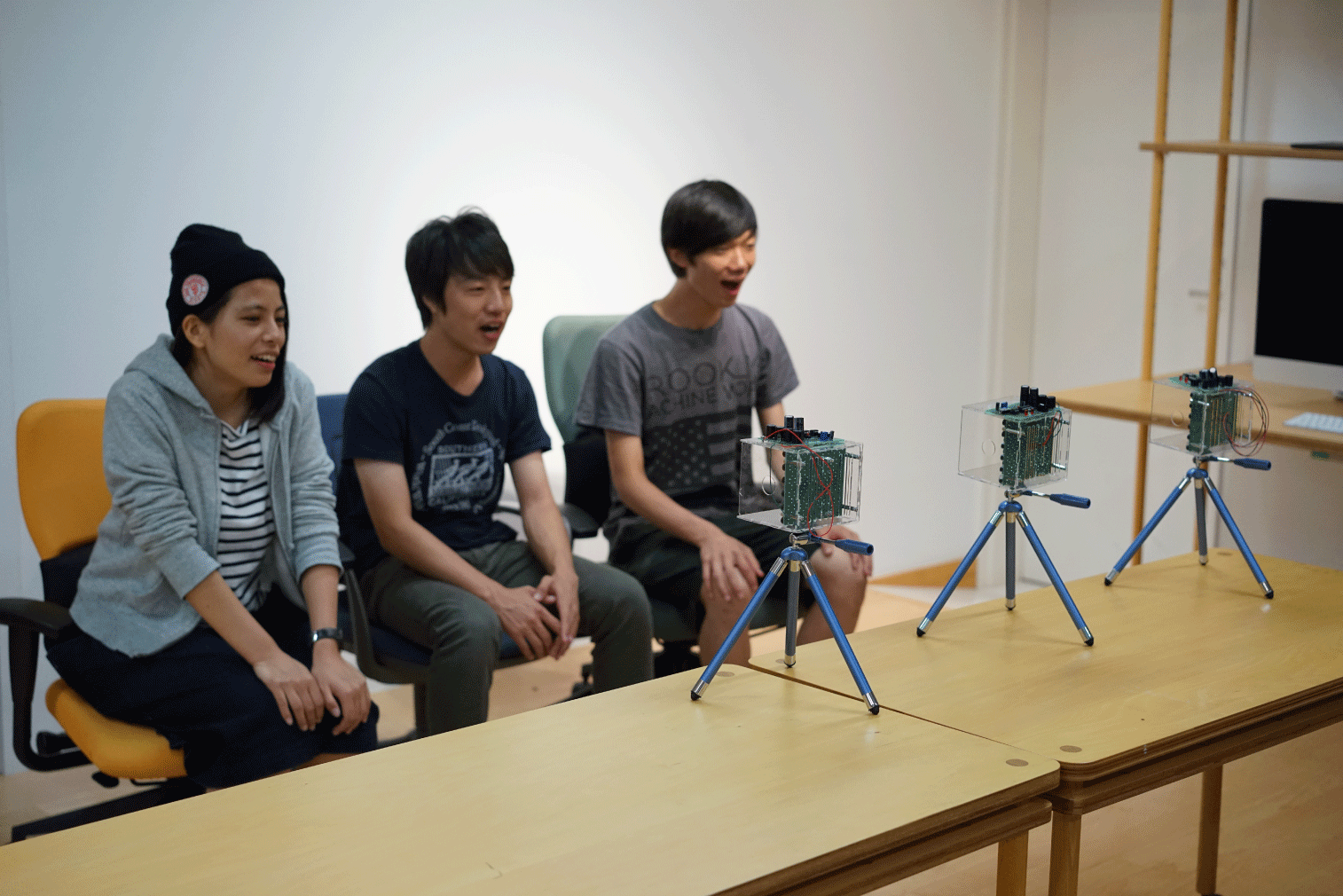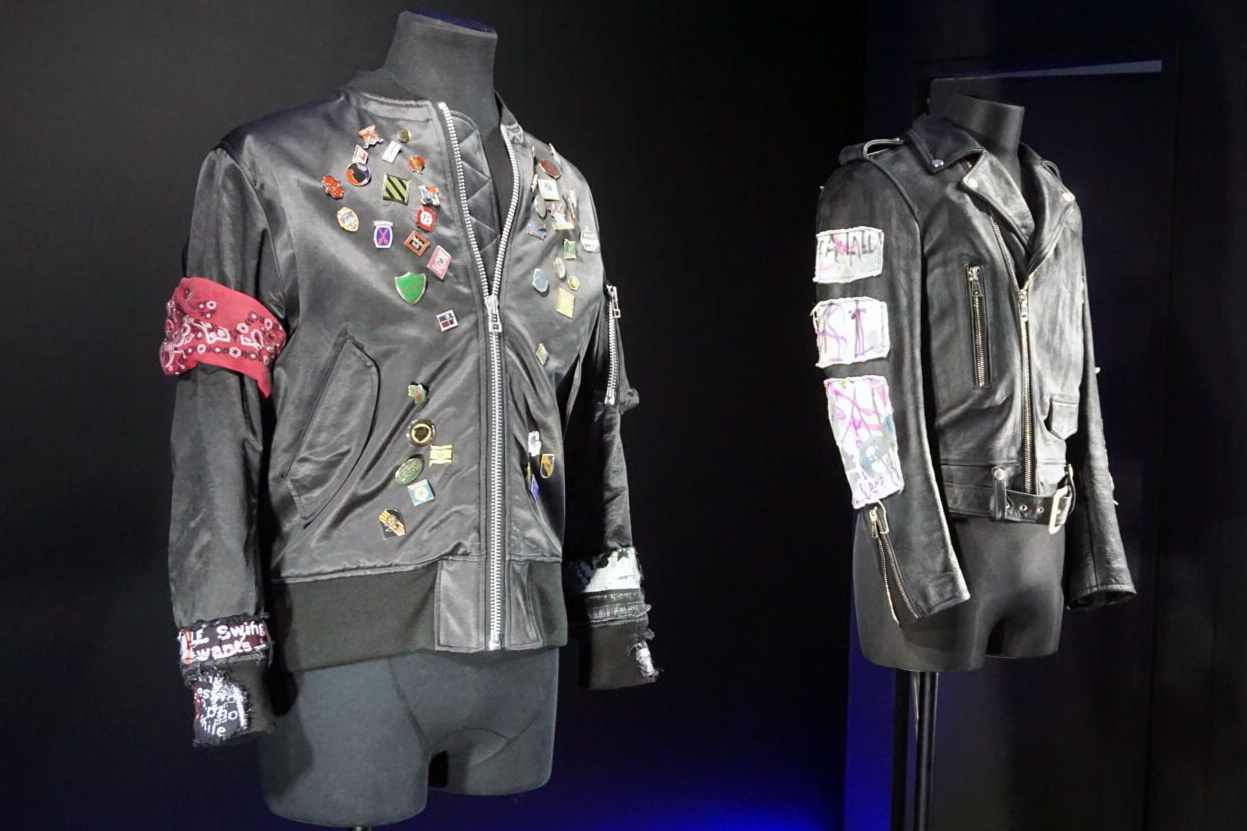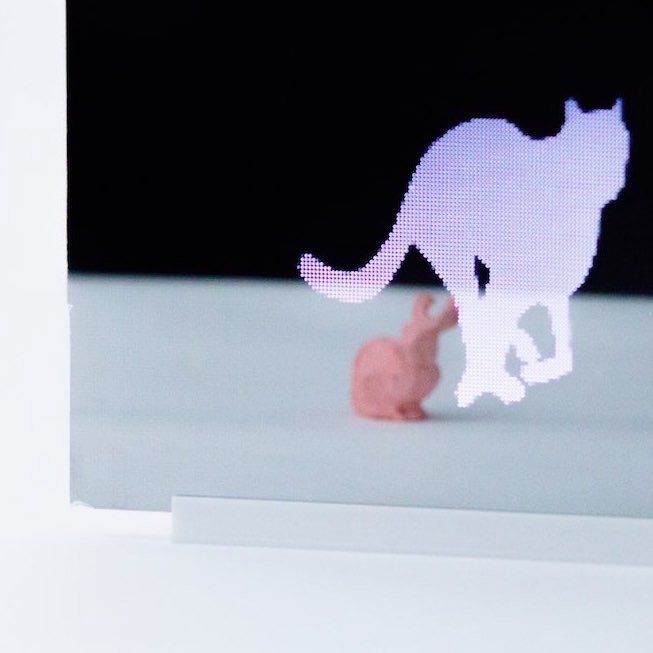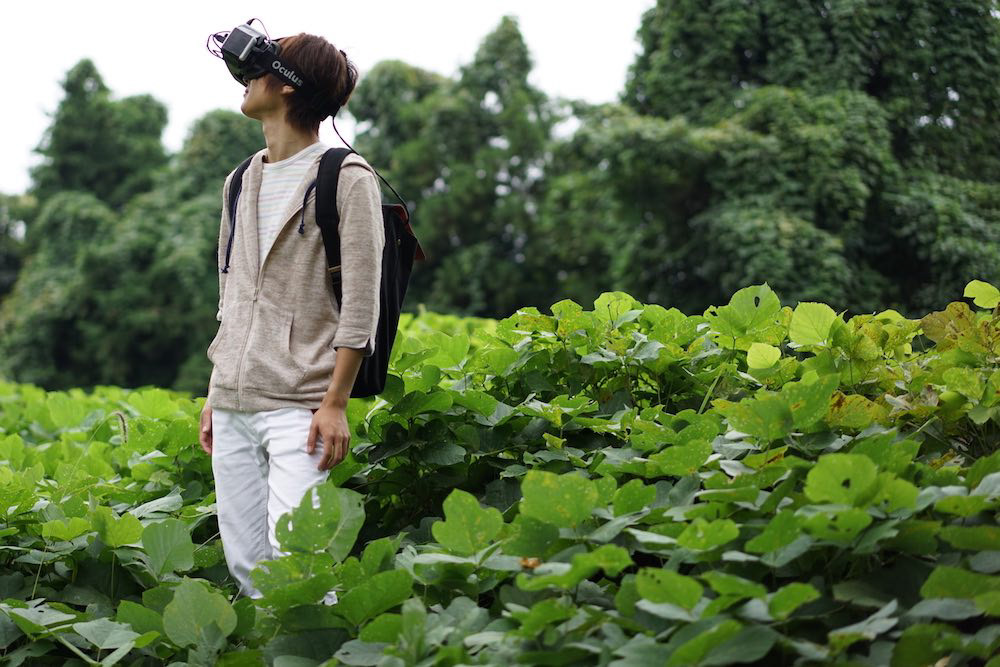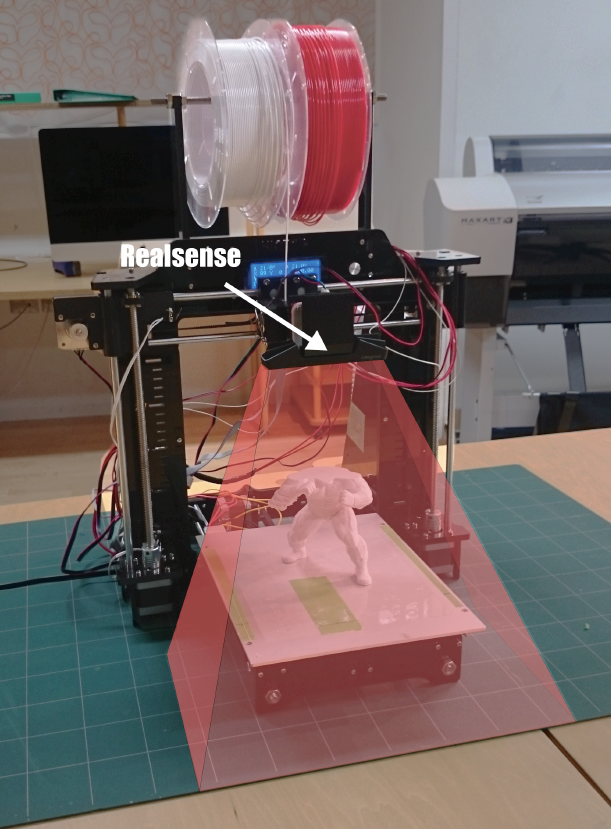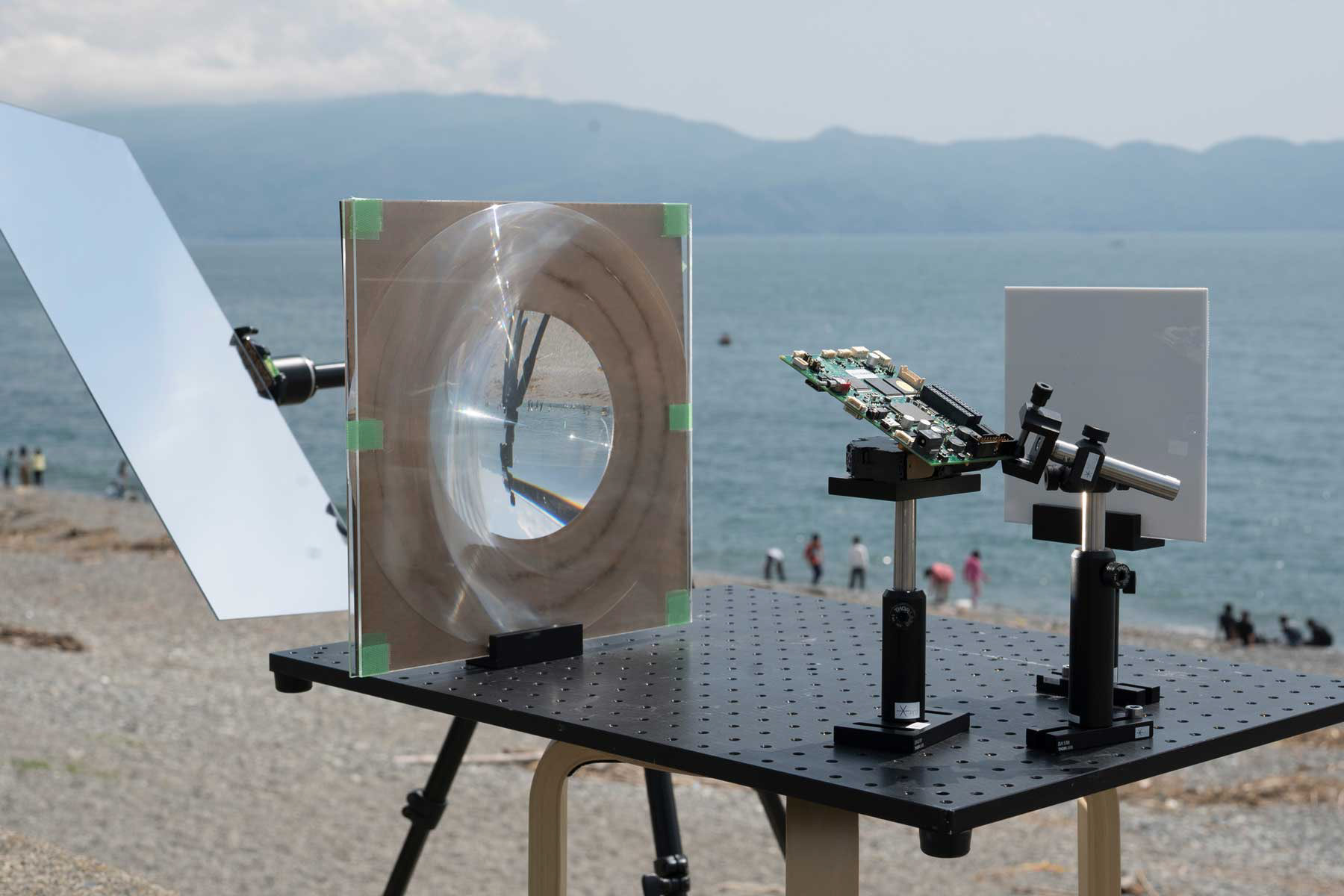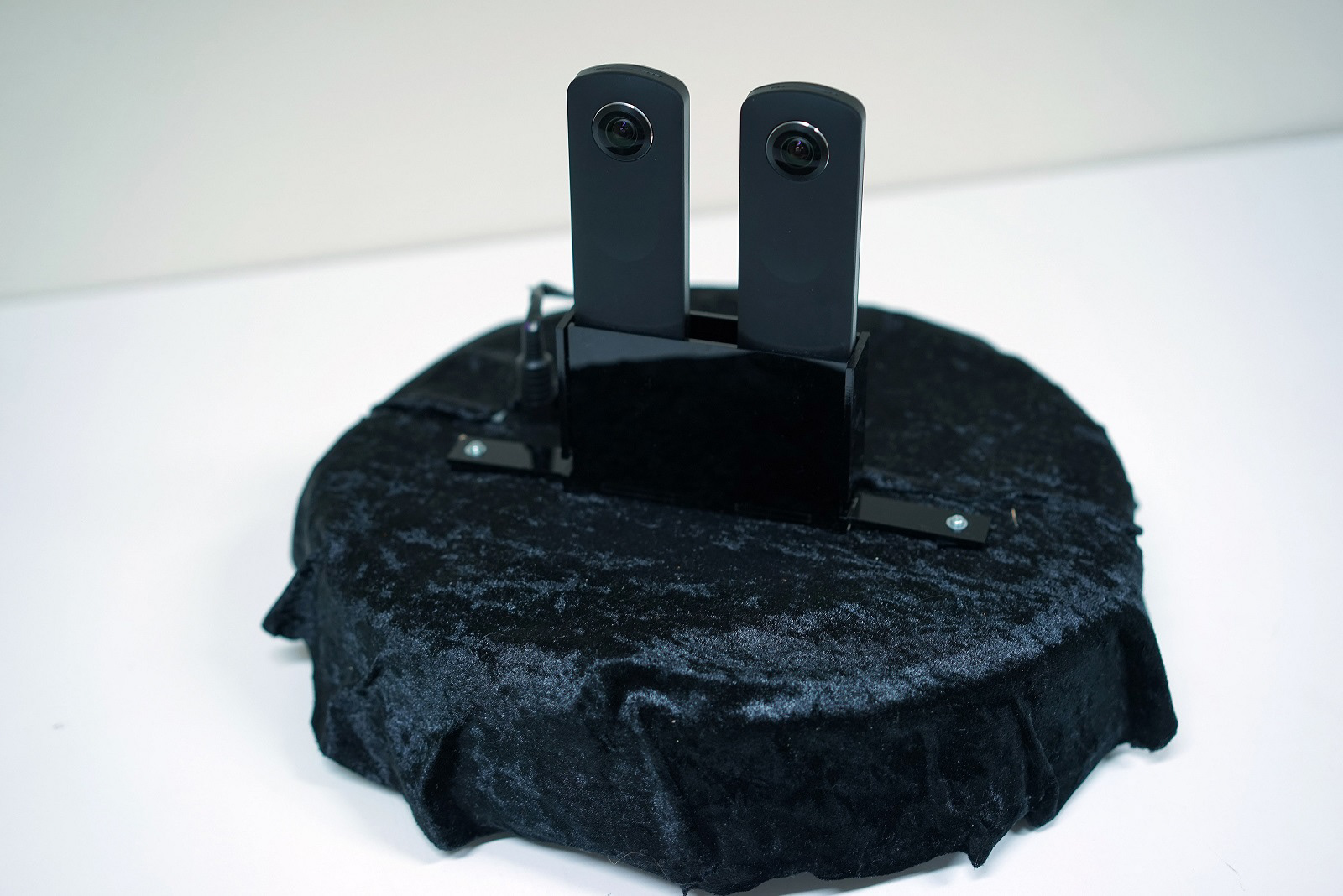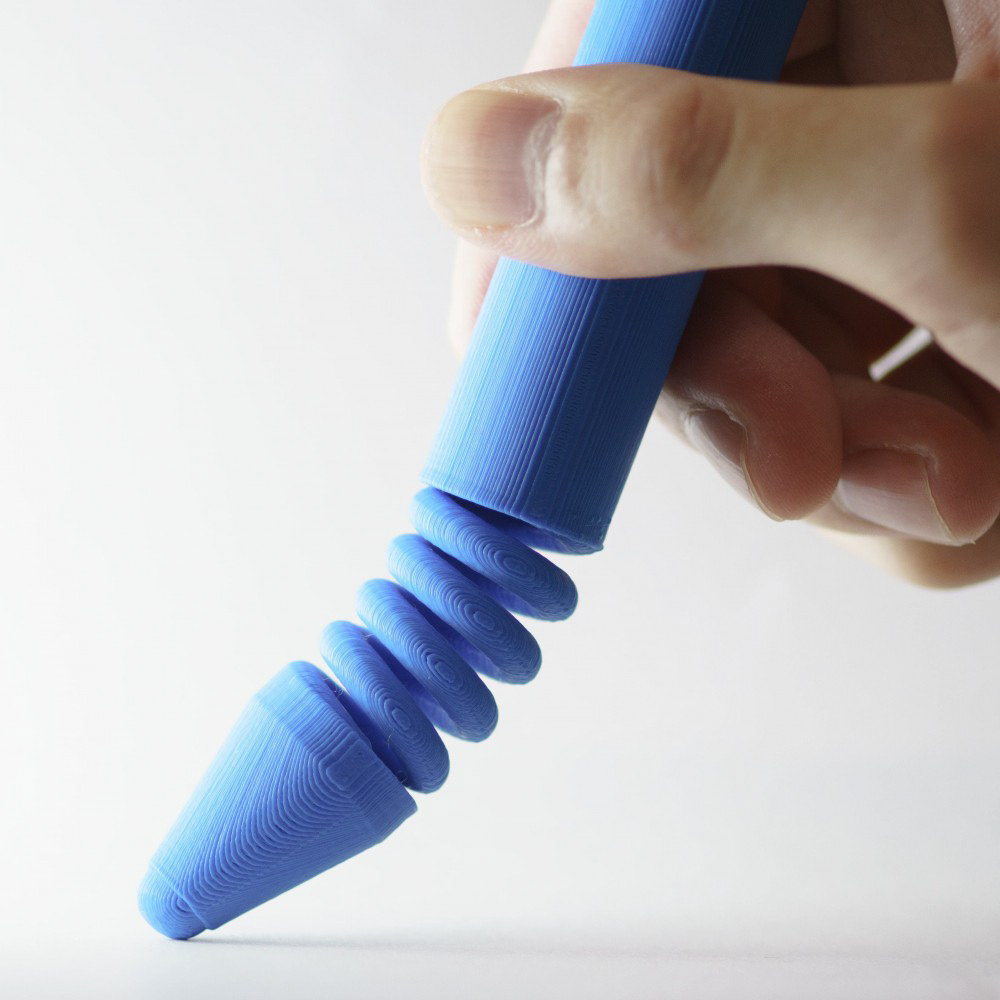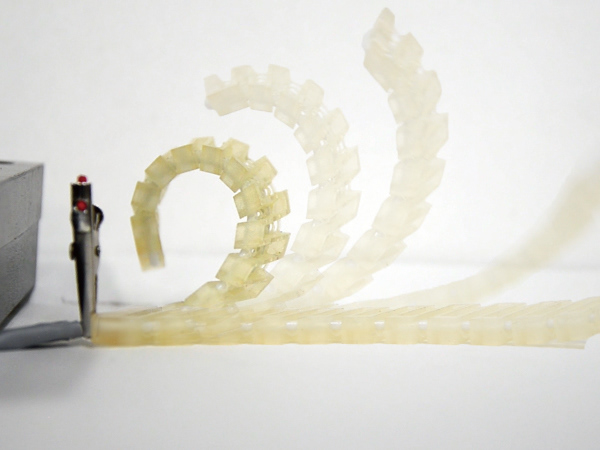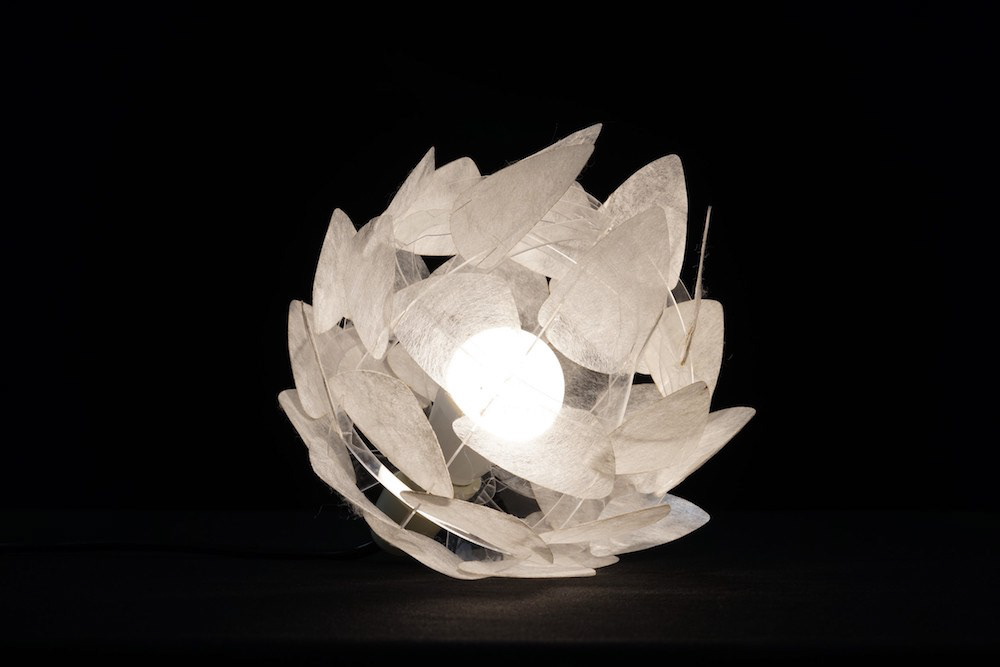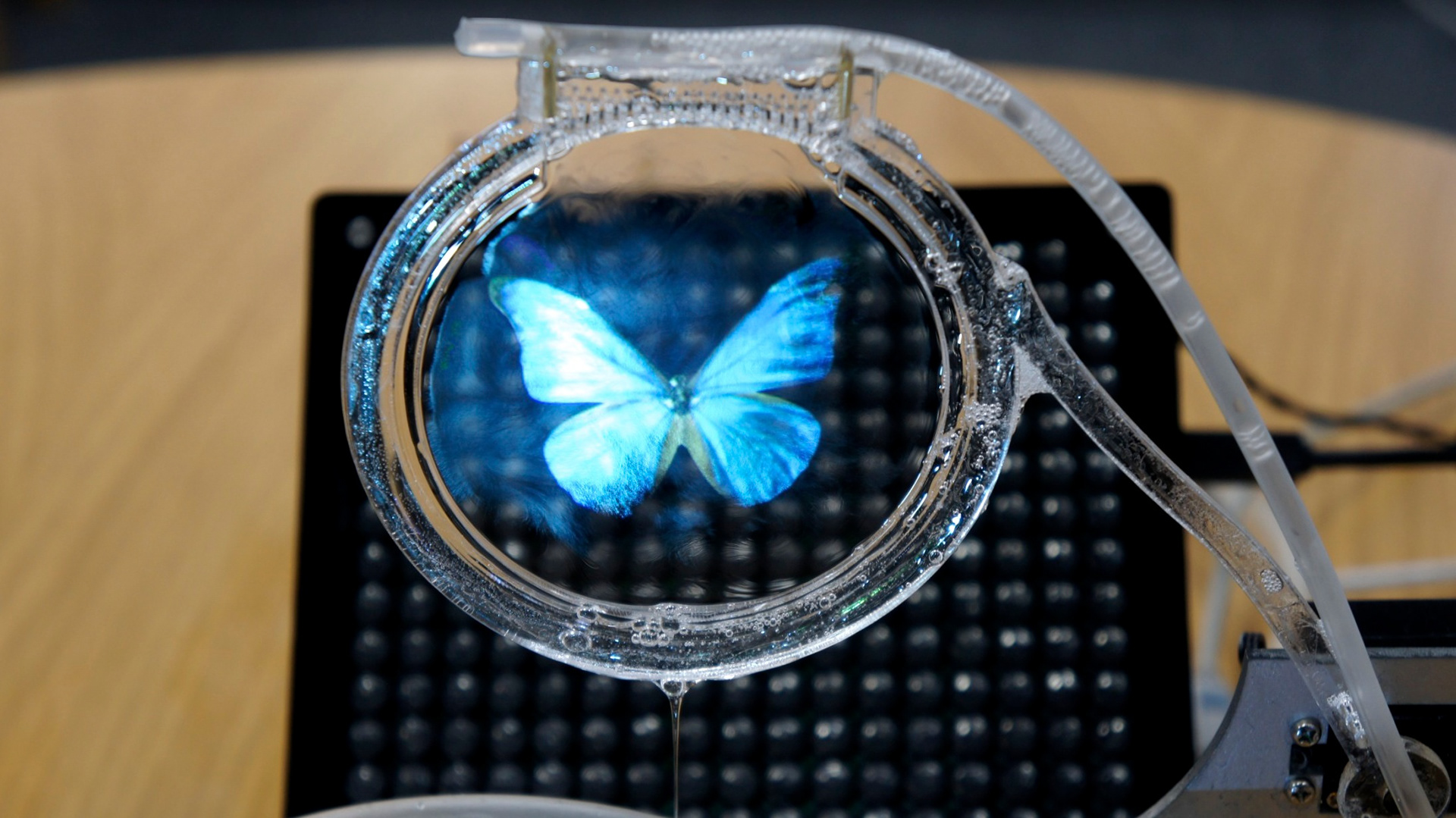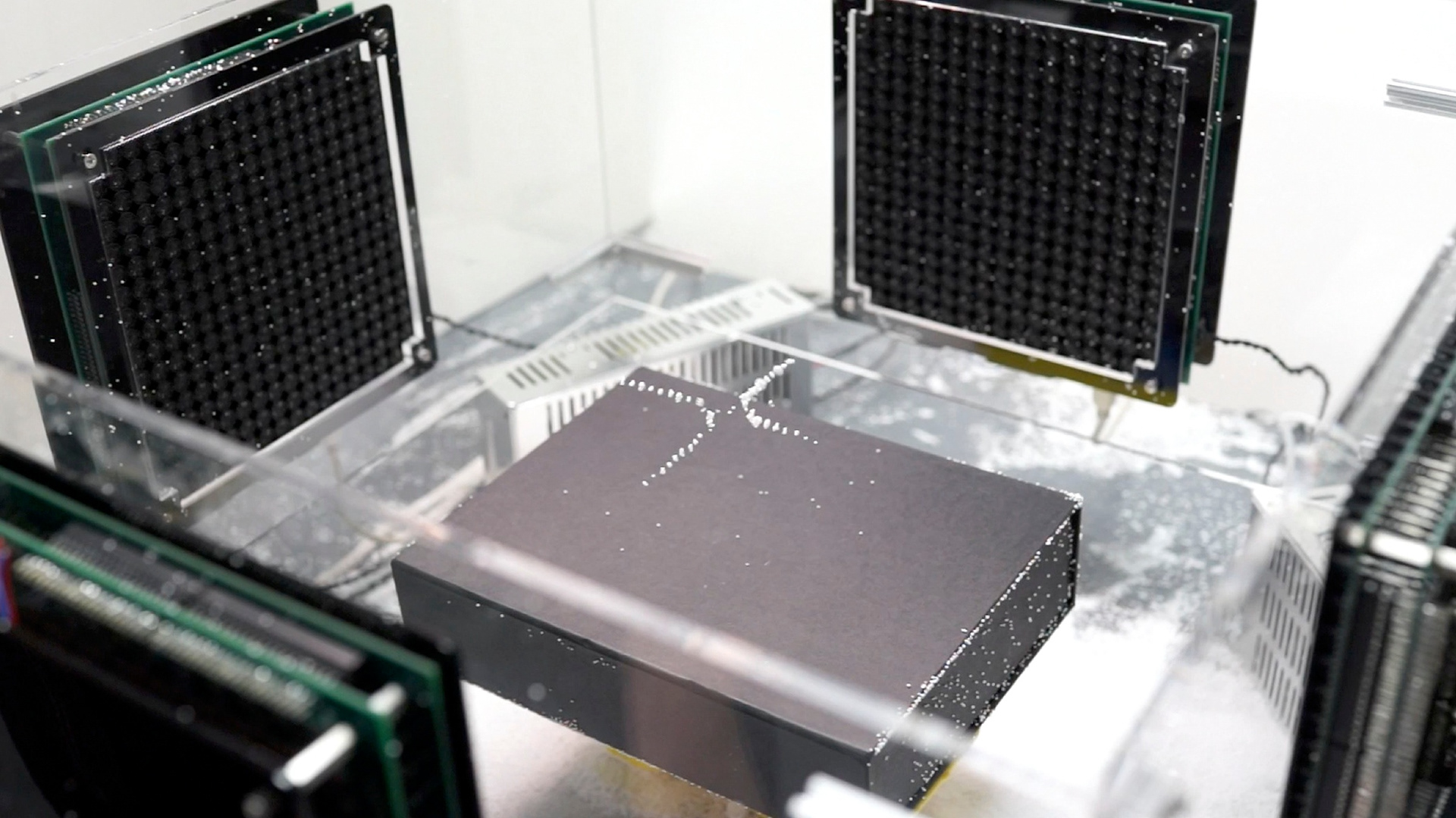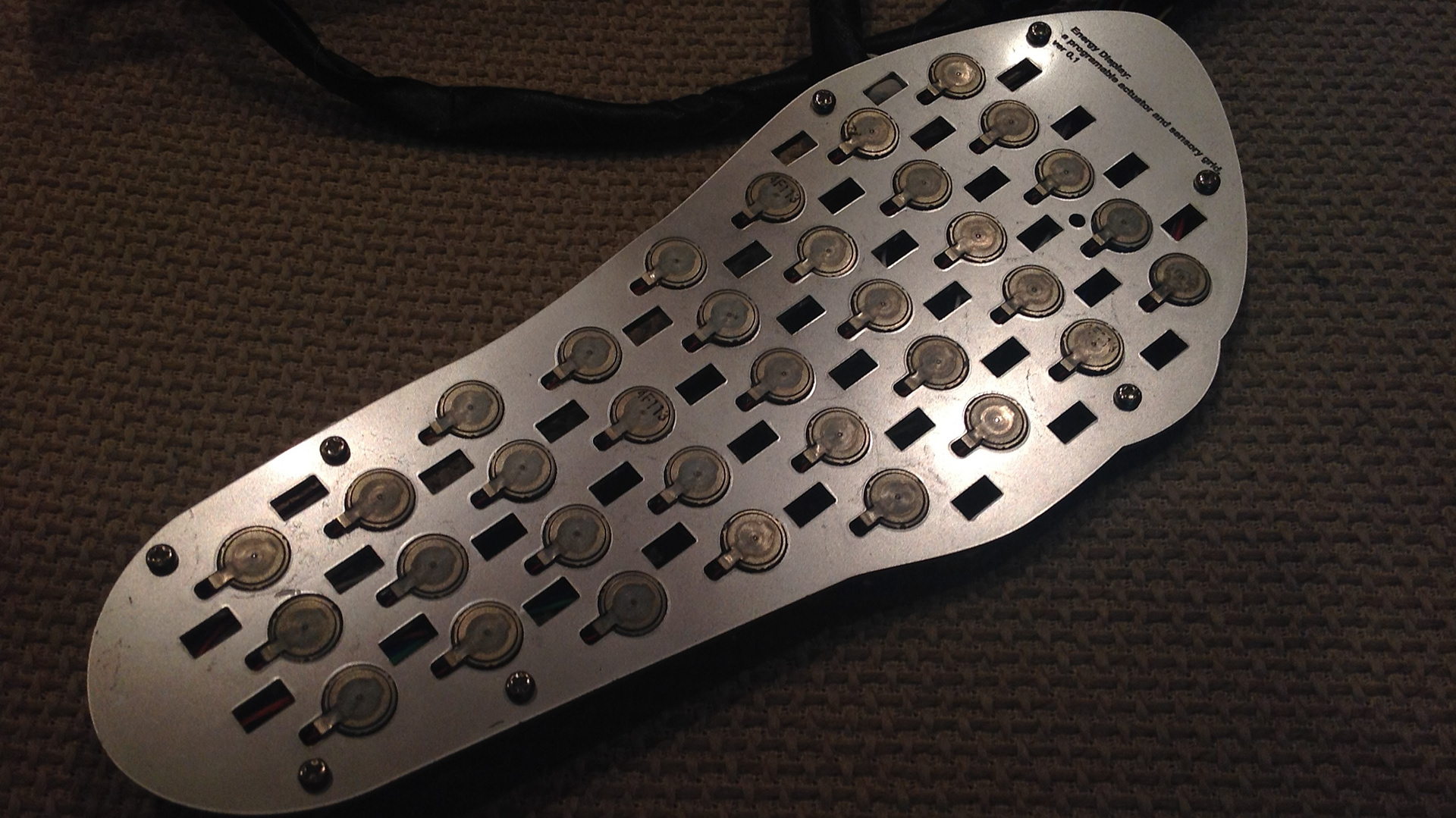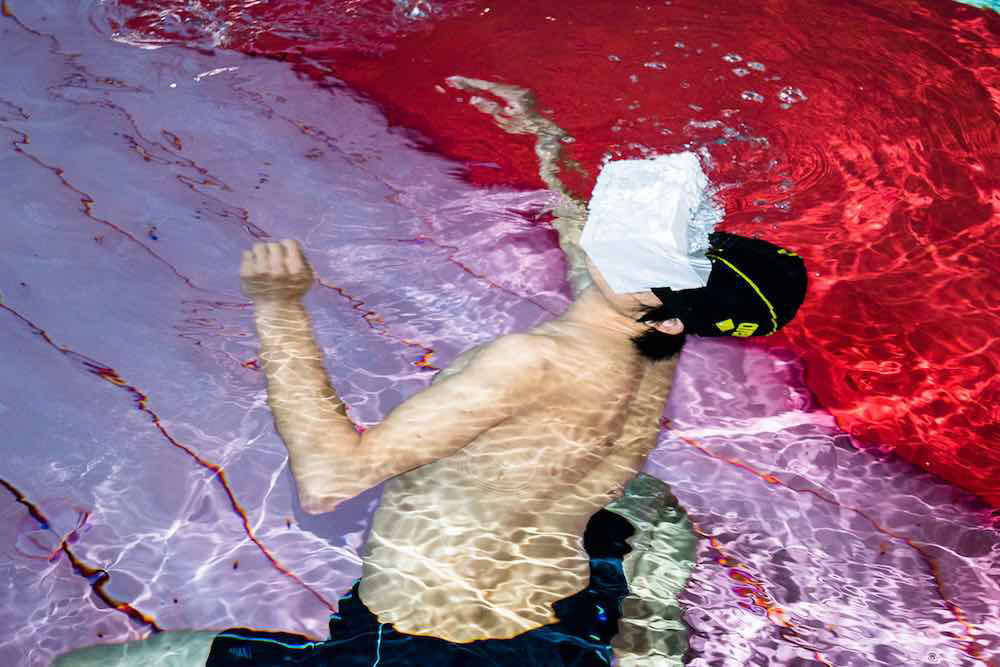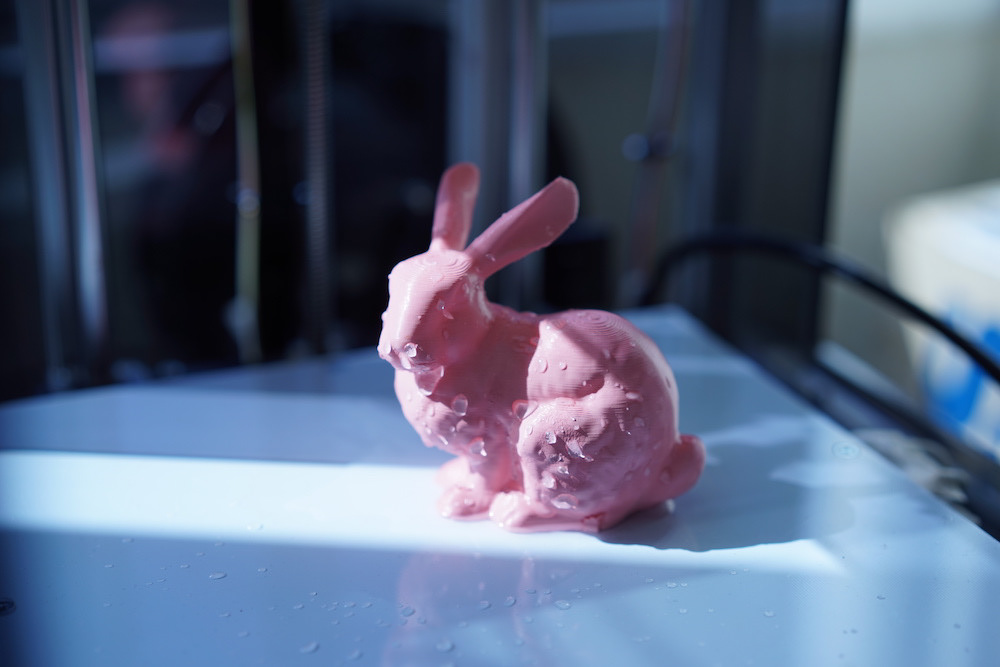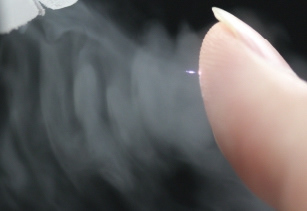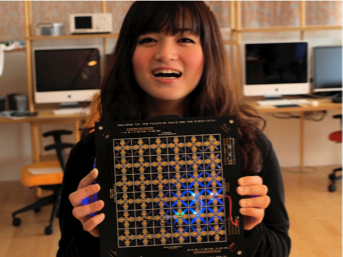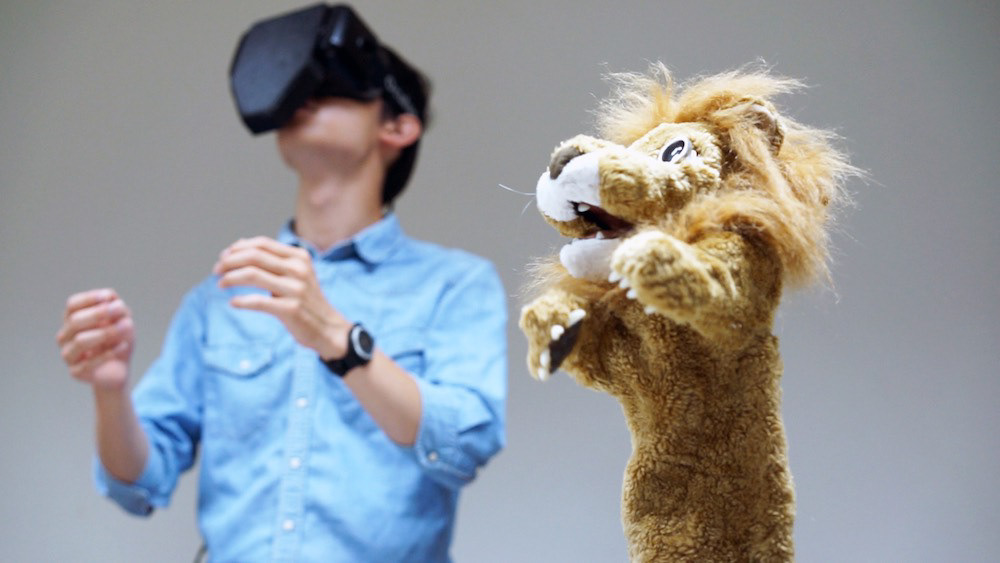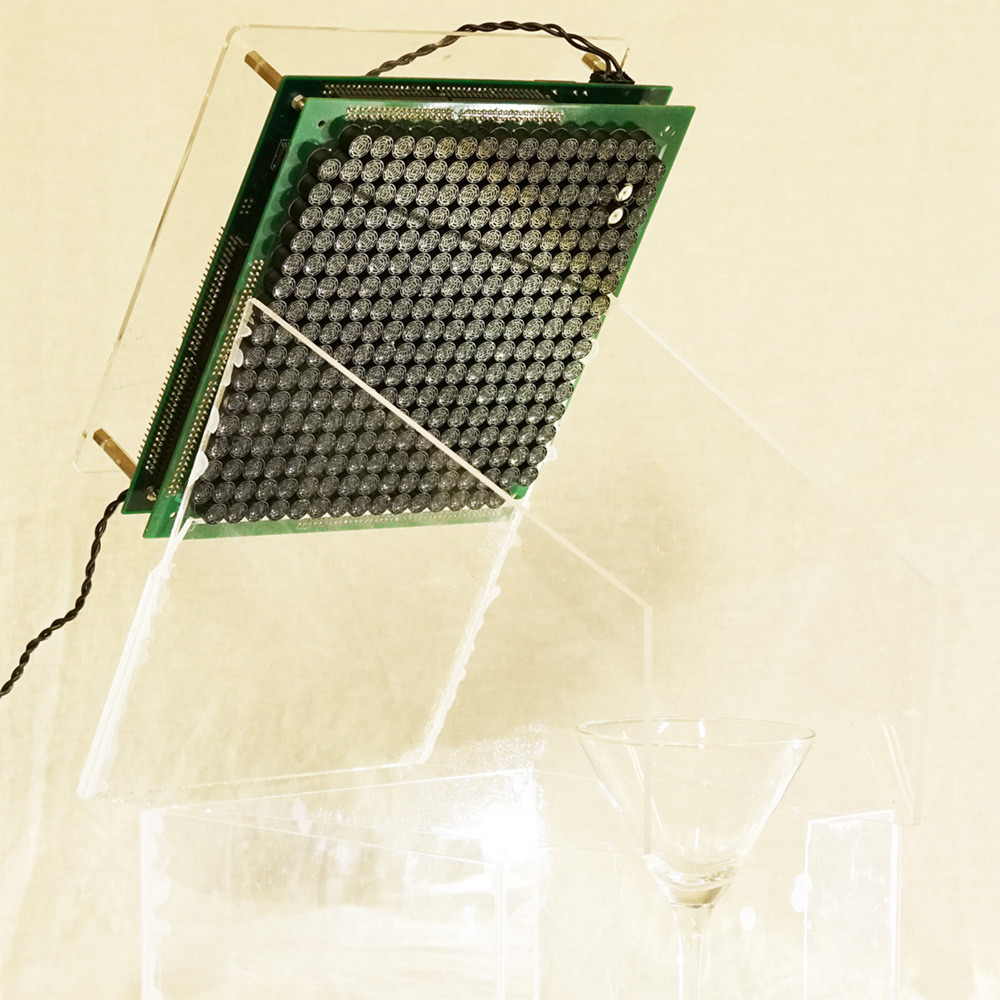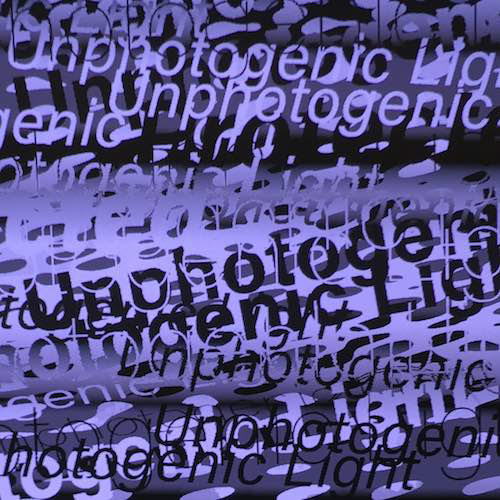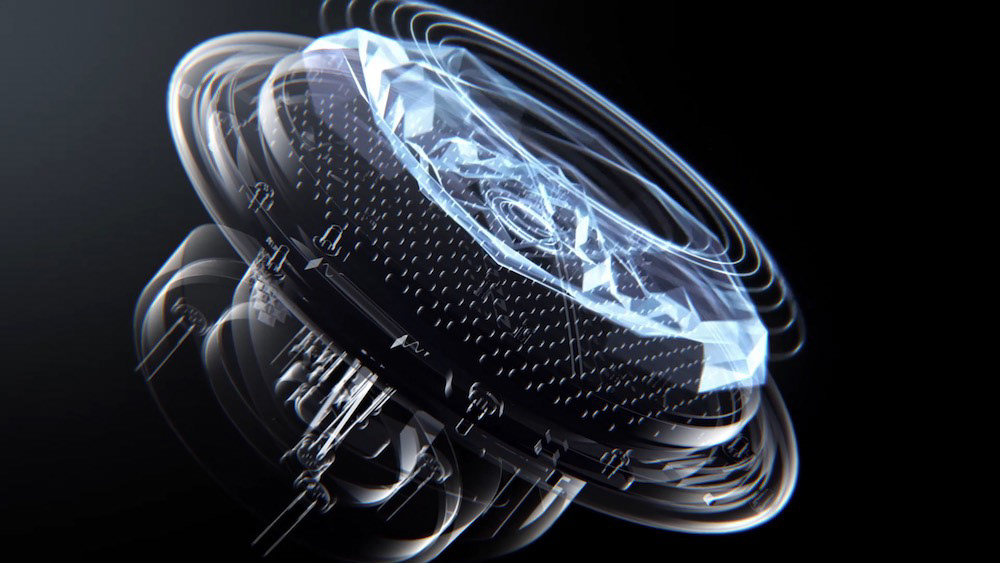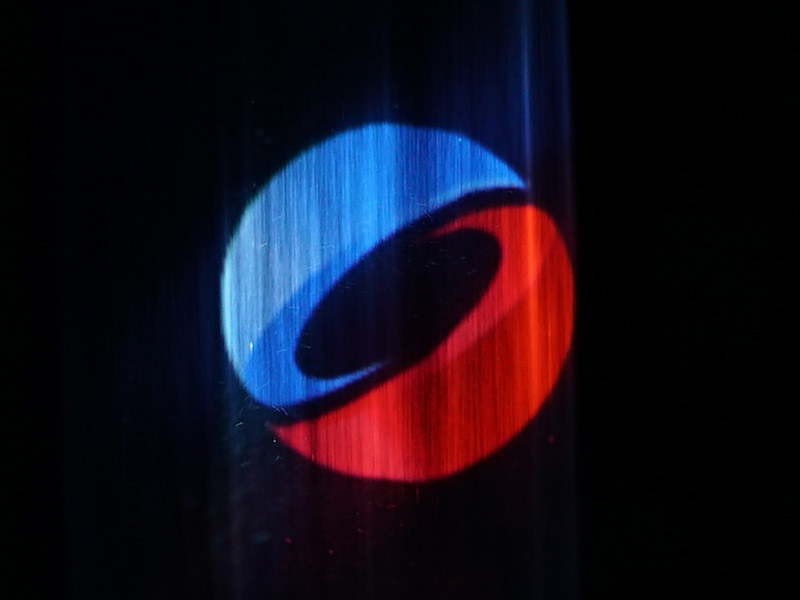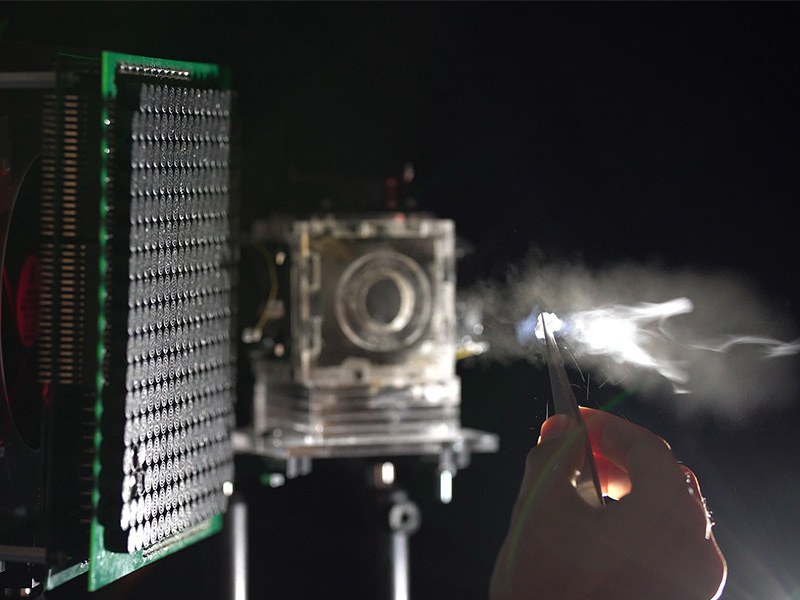This paper reports a new system for prototyping circuits called the Visible Breadboard. The Visible Breadboard is a solderless breadboard that allows users to make or erase physical wirings with tangible input by hand and to see the voltage level of each hole at all times by a colored LED light.
Most of us remember playing with colorful spinning tops when we were children. Here in our research, we made mechanical pixels with the spinning tops which introduces the mechanical display. This enables to enlarge the pixels without the direct lighting. Those mechanical pixels could be applied to make an ambient atmosphere in small or large space.
A Colloidal Display: membrane screen that combines transparency, BRDF and 3D volume
The Colloidal Display proposes an innovative solution which transforms a soap film into the world’s thinnest screen. This screen’s transparency, texture, and shape can be controlled dynamically by using ultrasonic sound waves. The screen’s unique material, which allows objects to pass through, promotes new ways of interaction.
We propose a novel graphics system based on the expansion of 3D acoustic-manipulation technology. In conventional research on acoustic levitation, small objects are trapped in the acoustic beams of standing waves. We expand this method by changing the distribution of the acoustic-potential field (APF). Using this technique, we can generate the graphics using levitated small objects.
We present a method of rendering aerial and volumetric graphics using femtosecond lasers. A high-intensity laser excites physical matter to emit light at an arbitrary three-dimensional position. Popular applications can thus be explored, especially because plasma induced by a femtosecond laser is less harmful than that generated by a nanosecond laser.
We propose a novel method of three-dimensional spatial audio rendering by expanding the ultrasonic phased array technique. We employ an ultrasonic phased array as a holographic acoustic generator to focus ultrasound at arbitrary three-dimensional positions. The sound pressure at the ultrasonic focal points is sufficiently high to radiate audible sound based on the self-demodulation effect in air. Consequently, the ultrasonic focal points act as audible sound sources. This sound-point method enables us to control aerial audio distributions more flexibly and more precisely in comparison with conventional superdirectional (sound-beam) loudspeakers. This method can generate and vanish the sound sources freely in air. These point sound sources can deliver private messages or music to individuals.
We are strongly motivated to redesign the demonstration of superconductive levitation in a more fascinating way by computational fabrication and manipulation methods. Computational design methods of superconductive levitation have wide applications in not only entertainment but also other HCI context. Now superconductive levitation is limited levitation time because of the temperature limit of superconductive material however, 10 min levitation is enough to use in many HCI usages such as showing the demo of 3D manipulation, discussion with levitated physical icons, and discuss with 3D actuated characters. We need to solve several problems in both fabrication and manipulation to achieve the 3D printed object levitation and manipulation by ways of superconductive levitation.
Retinal projection is required for xR applications that can deliver immersive visual experience throughout the day. If general-purpose retinal projection methods can be realized at a low cost, not only could the image be displayed on the retina using less energy, but there is also the possibility of cutting off the weight of projection unit itself from the AR goggles. Several retinal projection methods have been previously proposed; however, as the lenses and iris of the eyeball are in front of the retina, which is a limitation of the eyeball, the proposal of retinal projection is generally fraught with narrow viewing angles and small eyebox problems. In this short technical report, we introduce ideas and samples of an optical system for solving the common problems of retinal projection by using the metamaterial mirror (plane symmetric transfer optical system). Using this projection method, the designing of retinal projection can becomes easy, and if appropriate optics are available, it would be possible to construct an optical system that allows the quick follow-up of retinal projection hardware.
Yoichi Ochiai. 2018. How could we ignore the lens and pupils of eyeballs: Metamaterial optics for retinal projection. In ArXiv e-prints. 4 pages. URL: https://arxiv.org/abs/1804.01253

